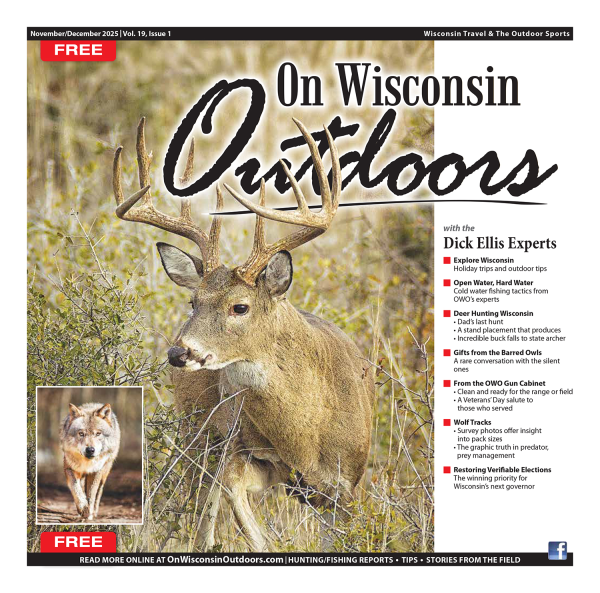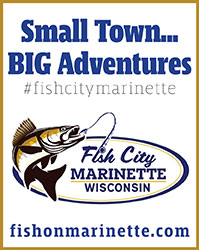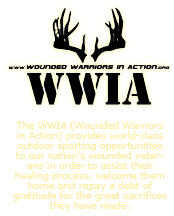DNR Weekly News Update for July 9, 2019
Published - July 9, 2019 by the Central Office
- Final year of reintroduction effort provides more than 60 Kentucky elk to Wisconsin's Northwoods
- No sharp-tailed grouse permits issued for fall 2019
- August 1 deadline approaches for furbearer trapping and hunting seasons
- Photo contest winners capture the natural beauty of the state's Great Waters
- Incidental take notice for Lafayette County
Final year of reintroduction effort provides more than 60 Kentucky elk to Wisconsin's Northwoods
Contact(s): Kevin Wallenfang, DNR big game ecologist, 608-261-7589
WINTER, Wis. -After the Department of Natural Resources' successful winter capture effort in Kentucky, more than 60 elk await release from their acclimation and quarantine pen into their new home in northern Wisconsin.

A bull elk in northern Wisconsin.Photo credit: Jeff Morden
The release of these elk later this summer will conclude the fourth and final year of Wisconsin's elk translocation efforts. This is also the second year that elk have been released into the Clam Lake elk range since their initial reintroduction in 1995. Following two years of translocation efforts in Jackson County, focus shifted back to the original northern herd that resides in Ashland, Bayfield, Price, Rusk and Sawyer County and originated from 25 Michigan elk. In 2017, 31 elk were added to the area from Kentucky.
"It was another great year, with many key partners including the Kentucky Department of Fish and Wildlife Resources, Rocky Mountain Elk Foundation, Great Lakes Indian Fish and Wildlife Commission, Flambeau River State Forest, U.S. Forest Service and others all coming together to make the effort possible and successful," said Kevin Wallenfang, DNR elk ecologist and elk reintroduction coordinator. "Adding more than 60 elk this year means we are approaching 300 elk in the northern herd."
In March, DNR translocated 48 adult elk from Kentucky to a pen in northern Wisconsin where they receive 24-hour monitoring during the required quarantine period. During the spring, pregnant cows gave birth to calves, growing the number of elk in the pen to more than 60 animals. As in the project's first year, this year's quarantine period has been extended a few weeks to allow calves recently born to grow and to allow for further health testing.
"As occurred in 2015, we had one elk test as a "suspect" positive for bovine tuberculosis, which requires us to extend the quarantine period while definitive testing of this elk is completed," Wallenfang said. "All the elk tested negative prior to coming to Wisconsin, and we've seen this before. As was the case in 2015, the most likely result is that this elk is negative for bovine TB. The results on this animal should be back in August. Pending clearance, the herd will be released into the wild."
Each animal, including newborn calves, have already been fitted with a tracking collar to provide useful movement, habitat preference and survival data after release.
The public is asked to avoid the general vicinity of the holding pen and to remain watchful when driving in the area to avoid vehicle collision with elk.
Black River elk herd increasing in numbers
During the first two years of elk translocation efforts in eastern Jackson County, the Department of Natural Resources and a number of key partners released 73 elk.
After a few years of adjustment, the central Wisconsin herd is now seeing increased survival and annual growth. Current projections put the herd at approximately 75-80 animals with up to 20 calves expected to have been born this spring. To date, 13 calves have been confirmed and efforts are being made to confirm additional births through field searches, observations and trail cameras.
"The last couple years we've seen incredible survival of calves," Wallenfang said. "In 2018, we confirmed 17 births, and all 17 are alive and well.
The Black River elk herd is being observed and enjoyed by locals on a regular basis, and visitors are traveling from outside the area in hopes of viewing the elk.
To receive email updates regarding current translocation efforts, visit dnr.wi.govand click on the email icon near the bottom of the page titled "subscribe for updates for DNR topics." Then follow the prompts and select the "elk in Wisconsin" and "wildlife projects" distribution lists.
For more information regarding elk in Wisconsin, visit dnr.wi.gov and search keyword "elk."
Want to get really absorbed in Wisconsin elk?
Sign up today to monitor Snapshot Wisconsin trail cameras in Flambeau River State Forest, Clam Lake or Black River elk range. Your efforts will help collect valuable data on the reintroduced elk herds and provide you with an up-close look at Wisconsin elk! No experience necessary and all training and equipment is provided. Sign up today at SnapshotWIElkSignup.org (exit DNR).
________________________
No sharp-tailed grouse permits issued for fall 2019
Contact(s): Mark Witecha, DNR upland wildlife ecologist and Farm Bill biologist, 608-267-7861; Alaina Gerrits, assistant upland wildlife ecologist, 608-261-8458
MADISON - In light of new scientific data and concerns over future viability of the sharp-tailed grouse population in Wisconsin, the Department of Natural Resources will not issue hunting permits for the fall 2019 hunting season.

A female sharp-tailed grouse in snow. Due to concerns for future viability of sharp-tailed grouse in Wisconsin, hunting permits will not be issued for the fall 2019 season.Photo credit: Brandon Converse
Each year, the Sharp-tailed Grouse Advisory Committee, which consists of DNR wildlife biologists and partnering agencies and organizations, uses spring dancing-ground surveys to recommend permit levels for the sharp-tailed grouse hunting season. This decision comes as a result of a review of the spring 2019 survey data as well as from a new scientific population model. This model was developed in cooperation with UW-Madison and shows low probabilities of sharp-tailed grouse persistence over the next 50 years.
It is important to note that since no permits are available, no applications will be made available or accepted this year.
Although no permits will be issued this year, by state law, sharp-tailed grouse will retain their status as a game species. DNR staff are hopeful that the population will respond positively to ongoing, focused habitat management efforts [PDF].
In the meantime, those who are passionate about Wisconsin's strong and historic tradition of sharp-tailed grouse hunting should remain encouraged by significant partnerships that exist in the northwest part of the state to manage barrens habitats that sharp-tailed grouse and other species depend upon for survival.
For more information, please visit dnr.wi.gov and search keywords "sharp-tailed grouse." Sharp-tailed grouse survey data can be found at keywords "wildlife reports."
________________________
August 1 deadline approaches for furbearer trapping and hunting seasons
Contact(s): Shawn Rossler, furbearer ecologist, 608-267-9428; Curtis Twellmann, assistant furbearer ecologist, 608-261-6452
MADISON - August 1 is an important application deadline for trappers and hunters who wish to pursue bobcat, fisher and river otter this fall.
Permit applications to pursue these species for the 2019-2020 season are available for purchase online at GoWild.wi.gov as well as in-person at Department of Natural Resources service centers and all license agents. Permit applications cost $3 ($6 for bobcat).
2019 fall season dates are as follows:
- Bobcat hunting and trapping:
- Period 1: Oct. 19 to Dec. 25
- Period 2: Dec. 26 to Jan. 31, 2020
- Fisher (trapping only): Oct. 19 to Jan. 5, 2020
- Otter (trapping only):
- North Zone: Nov. 2 to Apr. 30, 2020
- South Zones: Nov. 2 to Mar. 31, 2020
Bobcat, Fisher and River Otter
The statewide harvest goal for bobcat is 1,050 bobcats, with 2,495 permits available for the 2019-2020 season. This marks the sixth year of statewide bobcat harvest.

August 1 is the application deadline for permits to pursue bobcat, fisher and otter this fall.Photo credit: Brian Collins.
The statewide fisher harvest goal for 2019-2020 is 900, and 4,550 permits are available. A statewide river otter harvest goal has been set at 2,000, with 13,880 permits available for trappers this season.
When applying for a permit, keep in mind that the fisher and otter zones have been consolidated and now match the bobcat zones. There is a Northern Zone and a Southern Zone split by Highway 64 for all three species.
Wait times for permits vary depending on the species and management zone. Search the DNR website, dnr.wi.gov, for keyword "trapping" for details on trapping and preference points needed to draw a permit in 2018.
Drawings will take place in August, with permits issued in September. Applicants may check their online account in mid-September to see if they have been awarded a permit by visiting GoWild.wi.gov.
In addition to a permit, a trapping license is required to trap bobcat, fisher and river otter. All first-time trappers who are trapping alone are required to complete a trapper education course before buying a trapping license. Trapper education classes are posted at GoWild.wi.gov. A trapper education course is not required to hunt bobcat.
Youth and mentored trapping
Starting in 2018, youth under the age of 16 may trap without a license while under the supervision of a licensed trapper. Youth trapping under supervision may apply for and purchase bobcat, fisher and otter permits.
Mentored trapping licenses are available to trappers 16 years or older who would like to trap under the supervision of a licensed trapper. The mentor must be 18 or older, and if the mentee is under 18, the mentor must either be the mentee's parent/guardian or approved by the mentee's parent/guardian. Anyone possessing a Mentored Trapping License may not receive a fisher or otter harvest tag but may assist the mentor in trapping these species. Additional permit and license details can be found in the 2019 Wisconsin Trapping Regulations.
For more information on trapping and hunting furbearers in Wisconsin, visit dnr.wi.gov and search keyword "trapping." For questions specific to the permit application process, contact the DNR Call Center at 888-WDNR-INFo (1-888-936-7463).
________________________
Photo contest winners capture the natural beauty of the state's Great Waters
Contact(s): Susan Tesarik, DNR Office of Great Waters outreach coordinator, Susan.Tesarik@Wisconsin.gov, 608-267-0555
MADISON - In Wisconsin, where four seasons are better than one, photo opportunities abound no matter where you are in the state or what time of year you visit. Nine photographers earned top honors for capturing Wisconsin's beauty with entries in the Department of Natural Resources' 11th annual Wisconsin's Great Waters Photography Contest.
Michael DeWitt of Ashland, Kristine Hinrichs of Milwaukee, Brent Hussin of Kewaunee, and Julie Kinzelman of Racine won first place honors in the contest's four categories, which include people enjoying Wisconsin's Great Waters; natural features and wildlife; historical and cultural features; and Great Waters stewardship.

Super Moon over Kewaunee HarborPhoto credit: Brent Hussin
DeWitt's photo, entitled the "Arch of the Apostles," was taken in February 2018 on Stockton Island in Lake Superior when the lake began to freeze. Strong winds and waves created an incredible arch measuring 12 feet high. Hinrichs' photo, "Capture the Moment," depicts the Milwaukee Pier Head Lighthouse at dusk framed by shades of blue, pink and orange reflecting off the calm waters. Hussin's "Super Moon over Kewaunee Harbor" photo depicts a brightly lit lighthouse in winter shining out over Lake Michigan where a bright orange super moon rises from the darkness. Kinzelman took first place with her colorful photo of a Monarch butterfly perched on a Bergamot bloom in Samuel Myers Park in Racine.
Karen Gersonde of Milwaukee, William A. Pohlmann of Cottage Grove MN, Emil Toney of Oshkosh, Michael DeWitt of Ashland, and Matt Jenson of Harris MN won second place honors for their photographs.
All photos are found in the 16-month calendar published each year by the DNR's Office of Great Waters and a new video highlights the winning photos. Details about the contest, along with all of this year's contest entries, can be found by searching the DNR website, dnr.wi.gov, for keywords "Great Waters photo contest."
2019 Great Waters Photo Contest
Sprinkled among the beautiful photographs are poems, short stories and descriptions of stewardship efforts from Wisconsin's Great Waters Writing Project. The DNR received 18 contributions for the Great Waters Writing Contest. Each year's writing project entries are featured in the calendar as well according to Susan Tesarik, the Office of Great Waters outreach coordinator who manages the contest.
The 2019-2020 Wisconsin's Great Waters calendars will be available at the Wisconsin State Fair's Exploratory Park starting August 1 and also at DNR regional offices and state parks visitors' centers.
"The annual photo contest and writing project is a fun way to highlight the many ways people connect with and value the Great Lakes and Mississippi River," said Steve Galarneau, director of the DNR Office of Great Waters. "As these photos and writings clearly show, the Great Lakes and Mississippi River are among Wisconsin's most cherished natural resources."
The Office of Great Waters is currently accepting writings and photos of Lake Michigan, Lake Superior and the Mississippi River for next year's contest. Wisconsin's Great Waters Photo Contest and Writing Project information and submission instructions can be found on the Office of Great Waters website. Visit dnr.wi.gov and search "Great Waters Photo Contest."
________________________
Incidental take notice for Lafayette County
Contact(s): Stacy Rowe, conservation biologist, 608-266-7012
MADISON -- The replacement of a bridge on State Highway 78 in Lafayette County may result in the "incidental taking" of a rare frog under an authorization the Department of Natural Resources proposes to issue for the project. Incidental take refers to the unintentional loss of individual endangered or threatened animals or plants that does not put the overall population of the species at risk.
The Wisconsin Department of Transportation is proposing to replace the State Highway 78 bridge crossing the Pecatonica River. Proposed improvements include removing and replacing the bridge deck. Guardrail at all corners of the bridge will be removed and replaced, which requires grading on the existing slopes. Fifty feet of existing asphalt on both approaches of the structure will be milled and overlaid with new hot mix asphalt to blend into the new bridge deck. Existing asphalt shoulders will be removed and replaced to accommodate the new guardrail installations.
The presence of the state endangered Blanchard's cricket frog (Acris blanchardi) has been confirmed in the vicinity of the project site. DNR staff determined that the proposed project may result in the incidental taking of some frogs.
Department staff concluded that the proposed project will minimize the impacts to the species by adhering to conservation measures; is not likely to jeopardize the continued existence and recovery of the state population of the species or the whole plant-animal community of which it is a part; and has benefit to the public health, safety or welfare that justifies the action.
The conservation measures to minimize the adverse effects on the endangered species will be incorporated into the proposed Incidental Take Authorization. Copies of the jeopardy assessment and background information on the Blanchard's cricket frog are available by searching the DNR website for incidental take public notice or upon request from Stacy Rowe (608-266-7012 stacy.rowe@wi.gov). The department is requesting comments from the public through August 8, 2019 regarding project-related impacts to the Blanchard's cricket frog. Public comments should be sent to Stacy Rowe, Wisconsin DNR, PO Box 7921, Madison, WI 53707-7921 or stacy.rowe@wi.gov.











